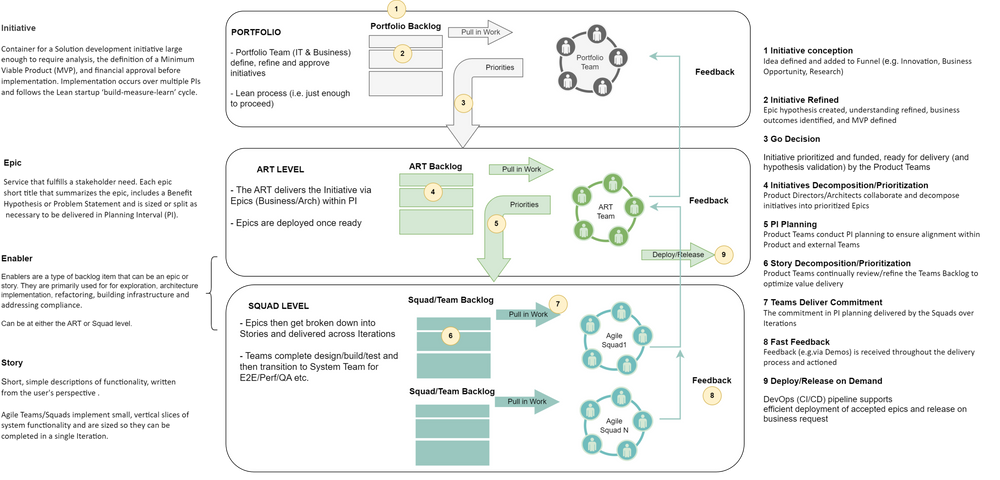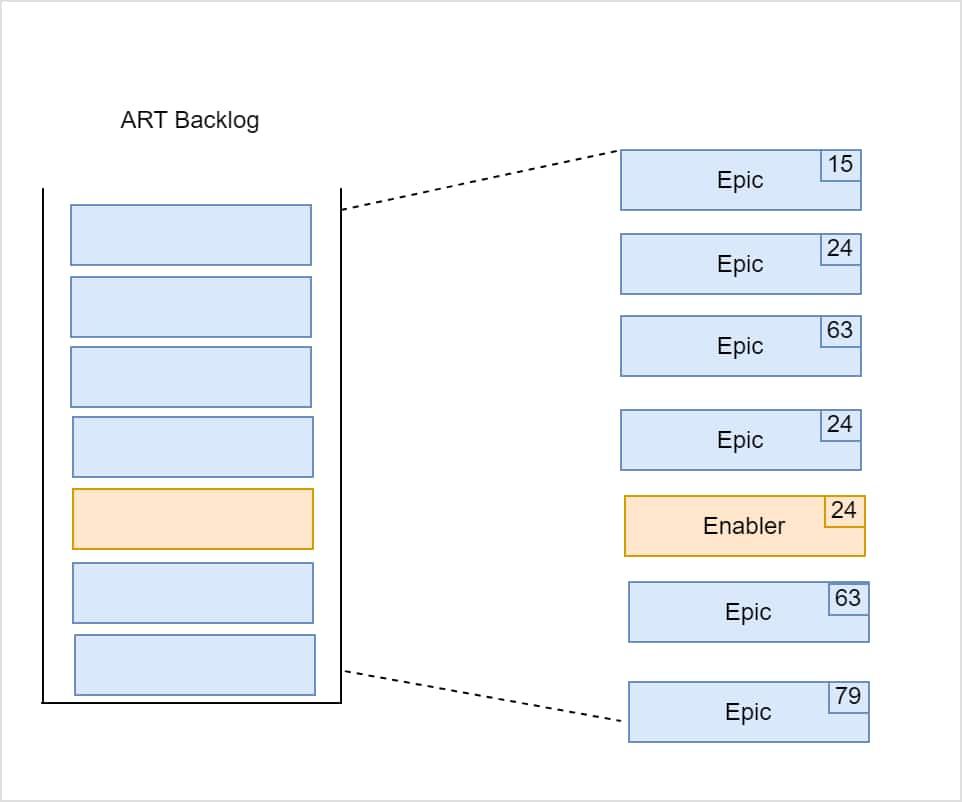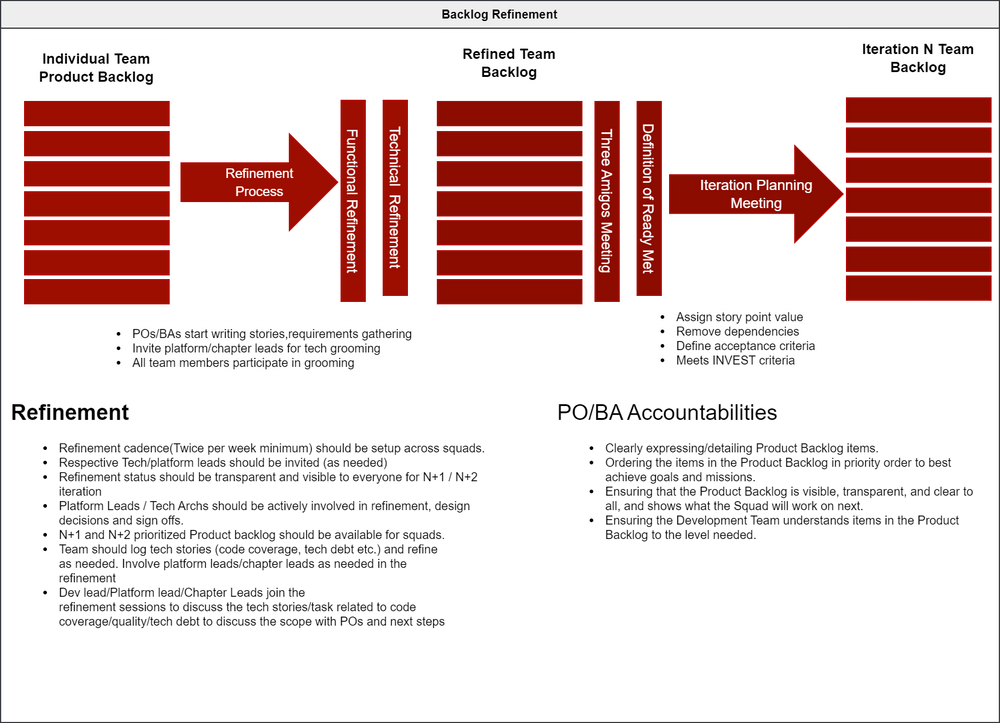OverView
Backlog is typically managed by articulating work as full hierarchy of items in Backlog Management tool (such as Jira) - Initiatives, Epics, Epics, Stories/Bugs, Tasks and Sub-Tasks. By doing so, the teams will be able to work efficiently and focus on delivering value. Backlog Management is best done by entire team (Squad) as group to value input from people who will be performing the work.
Backlog Structure & Workflow
From a workflow perspective, this is how teams will manage their backlog from ideation to delivery:

ART Backlog
The scope of PI Planning is defined by the ART Backlog, which contains the set of upcoming epics, NFRs, and architectural work that define the future behaviour of the system. All stakeholders work together to crate a common backlog and it is done by series of refinement sessions/workshops. A set cadence of refinement should be scheduled to make consistent progress. Since the ART backlog is the combination of business epics, tech enablers and tech debt, a balance need to be maintained about how much capacity is allocated to each of these items in the next PI in order to optimize the value and outcome by each team. The product management has authority on new epics and solution/arch team has authority on system/solution related items.
ART Backlog refinement typically includes:
Reviewing and updating backlog item definition and developing acceptance criteria and benefit hypothesis
Working with the teams to establish technical feasibility and scope estimates
Analyzing ways to split backlog items into smaller chunks of incremental value
Identifying the enablers required to support new epics and objectives, and establishing their capacity allocation
ART backlog estimation should be done in terms of t-shirt sizing. Following are indicative t-shirt can be used
X-small ~12 Days
Small ~19 days
Medium ~ 32 days
Large ~ 51days
X-Large ~63 days

Weighted Shortest Job First
Prioritizing the Backlogs - A defined prioritization framework should be used to prioritize the ART backlog. SAFe® prioritization Weighted Shortest Job First (WSJF) can used for prioritization.

Backlog Refinement
Agile teams will take a flow-based approach to maintain backlog readiness, typically by having at least one team backlog refinement per week. Agile team will look at the upcoming stories (and epics, as appropriate) to discuss, estimate, and establish an initial understanding of acceptance criteria. Teams will apply Behaviour-Driven Development, using and use specific examples to help clarify stories.
The backlog refinement process is continuous process and should not be limited to a single event time box. Teams may revisit a story multiple times before finalizing and committing to it in Iteration Planning. Also, as multiple teams are doing backlog refinement, new issues, dependencies, and stories are likely to result. In this way, backlog refinement helps surface problems with the current plan, which will come under discussion in PI Planning event.







